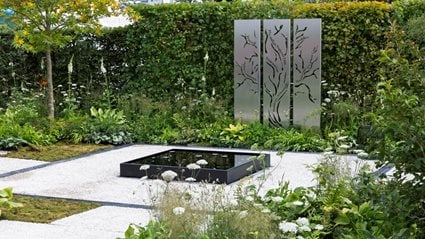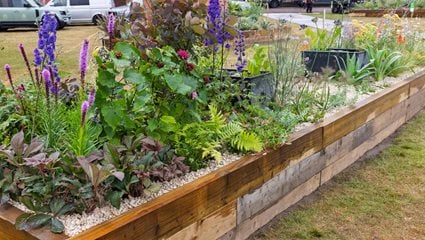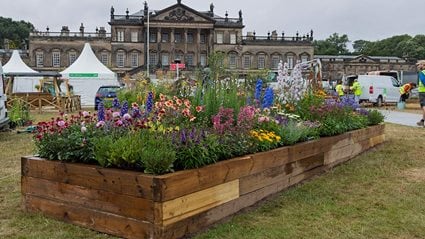At a glance
Who would use this garden?
Everyone, a sensory and visual experience for all
Where is the garden set?
Set inside mysterious rhubarb forcing sheds, this garden recreates the atmosphere of West Yorkshire’s rhubarb forcing industry, where sweet, tender stems are harvested by candlelight in near pitch black.
The Garden
An artistic exploration of the otherworldly glow and atmosphere found in The Rhubarb Triangles forcing sheds, where rhubarb creaks and sparkles like jewels under candlelight. The installation aims to visually transport visitors inside the interior of dark rhubarb forcing sheds, using plants to interpret the sensory experience found within. Using colour, texture, light and shadow the installation will recreate the otherworldly experience of rhubarb growing by candlelight, transforming the Chapel into an immersive experience that emulates the dark interiors of rhubarb forcing sheds.
The method of forcing rhubarb is said to originate from the early 1800s when gardeners at Chelsea Physic Garden discovered sweet pink stems growing underneath some discarded upturned buckets. Before long the ingenious Victorians had developed terracotta rhubarb forcing jars to replace the humble bucket so that gardeners could enjoy an early crop, while maintaining the aesthetic values of their plot.
Yorkshire forced rhubarb (Rheum rhaponticum) is grown outside for two years before being lifted and placed into vast pitch-black huts where heat and the lack of light forces them to surge upwards at such a rate you can hear the cracking sounds as they grow. In February they are handpicked by candlelight and packed in boxes to be dispatched to markets, shops and restaurants around the world.
The Rhubarb Triangle
Joeseph Whitwell of Leeds is credited with pioneering the production of forced rhubarb in Yorkshire. With the ideal soil, winter frost and access to cheap coal to warm the sheds, production quickly expanded and by the late 1870s the area between Leeds, Wakefield and Bradford became known as the ‘Rhubarb Triangle’ exporting stems around the world. With its health properties and availability at a time of the year when other fruit is scarce, rhubarb soared in popularity hitting a peak in the post-war period.
However, as imported food became more readily available, added to high land and labour costs, the industry saw a rapid decline. At its peak there were over 200 forced rhubarb growers in the area, now there are barely a dozen. Forced Yorkshire rhubarb is still farmed in much the same way it was 100 years ago, and now it is seen as a regional delicacy with Protected Designation of Origin status, much like Champagne, Prosciutto di Parma and Roquefort cheese.
Planting
The planting design combines vibrant pinks, peaches and orange with dark black to represent the visually striking pinkish rhubarb, the glowing candlelight by which it is picked and the darkness that it is grow in. Mostly perennials, the plants are woven together with grasses in corresponding shadowy tones, and annual bedding plants provide a more traditional twist within the conceptual planting scheme.
Key plants include: Coleus scutellarioides ‘Campfire’, Monarda didyma ‘Balmy Rose’, Lobelia × speciosa ‘Starship Deep Rose’, Calamgrostis × acutiflora ‘Karl Foerster’ and Dahlia ‘Aperto Deep Orange’.
All Show Gardens






Get involved
The Royal Horticultural Society is the UK’s leading gardening charity. We aim to enrich everyone’s life through plants, and make the UK a greener and more beautiful place.